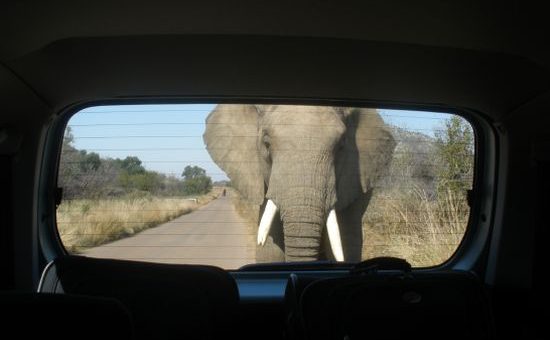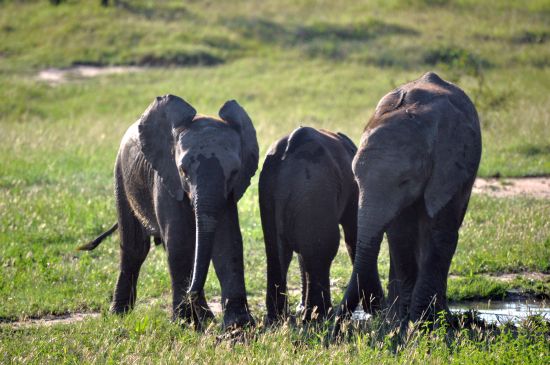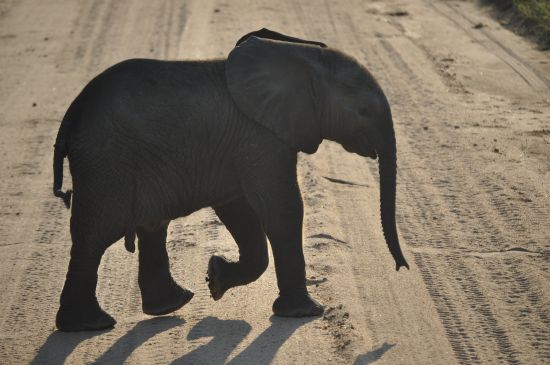
When you start researching your African Safari, the term “Big 5” often comes up. The term Big 5 was coined by big-game hunters and quickly became known as the most dangerous animals to hunt on foot, and the name stuck – although now ‘shooting’ is done through a camera lens. So the Big 5 are not called the Big 5 because of their size! The Big 5 are five of Africa’s greatest wild animals – lion, leopard, elephant, Cape buffalo and rhino.

As during the bygone hunting era the term “Big Five” still conjures up the romance and excitement of Africa’s exotic destinations and experiences. Images will begin playing in your mind: lions roaring; elephants trumpeting; buffaloes lurking in long grass; rhinos standing stately under a thorn tree; leopards prowling in the gathering darkness.
Many travellers regard a visit to Africa as incomplete without having spotted, and perhaps photographed, the Big Five – legends of the wilderness which have become synonymous with Africa. According to Wikipedia, Countries where all the members of the big five can be found include Botswana, Zambia, Uganda, Namibia, Ethiopia, South Africa, Kenya, Tanzania, Zimbabwe, Democratic Republic of the Congo, and Malawi.

Richard has compiled a list of facts about each of the Big 5 that he personally found fascinating whilst on safari in Africa. In this post Richard shares his favorite fast facts about the Biggest of the Big 5 – The African Elephant, which is the world’s largest and heaviest land animal.
- Like humans, African elephants have a dominant side. While humans are right or left handed, elephants are right or left tusked in using one to dig more than the other.
- Female elephants undergo the longest pregnancy of any animal – 22 months
- New born African elephants are about 225 lbs at birth and born with a pinkish hue. Over their first 48 hours the color changes to a more traditional grey.
- Baby elephants cannot use their trunks early in life. When swallowing water they must stick their mouths in the water. They will also suck their trunk like a human babies suck their thumbs.

OLYMPUS DIGITAL CAMERA
- Elephant herds are matriarchal. The females stay together for life while the males will be pushed out of the herd in their teenage years where they congregate into all male groups. Adult male elephants will regularly interact with the herd often for days at a time.
- Like humans, elephants pass the “mirror test” – they recognize themselves in a mirror.
- No wonder the elephant’s trunk is so impressive. It is comprised of over 40,000 muscles. Compare that to the human body which has about 650 muscles. The elephant tusk is sensitive enough to open a lock to a door.
- African Elephants can eat up to 350 pounds of vegetation a day.
- African elephants sleep standing up for about 2 – 3 hours a day.
- The blood in the ear of an African elephant can be reduced to only 50 degrees F when flapped. This cooling effect is quite helpful in hot summer days.
Richard has more than 12 years of personal travel in Africa, in addition to guiding and planning trips and itineraries for his clients. He has seen and experienced most of Southern and East Africa and is continuously staying up to date and researching the latest news, lodges, accommodation and travel logistics. If you need advice or a chat….. just ASK RICHARD!
Richard had a close encounter with African Elephants at Sanbona Wildlife Reserve in the Western Cape in South Africa. Southern Sky Adventures. Have a look!
Africa… In your Wildest Dreams!
Southern Sky Adventures
Specializing in guided and self-drive trips through Southern and East Africa & the Indian Ocean Islands
721 Woodward Way, NW, Atlanta, GA 30327 USA
404.300.9630 office – 770.324.0068 cell
Website: www.southernskyadventures.com
![]()
![]()
All images ©Richard Pace -taken personally in Africa on safari


